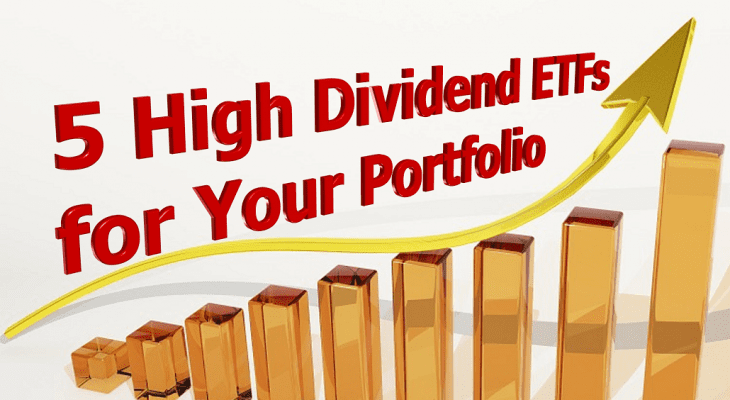High Dividend ETF Official Website – Access and Platform Info

For the most accurate and timely data, always begin your research on the official ETF sponsor’s website. Firms like Vanguard, BlackRock’s iShares, and State Street Global Advisors (SSGA) maintain dedicated sections for each of their funds. Here, you will find the official prospectus, a complete list of holdings, and the most recent dividend distribution details, all updated in real-time and free of charge. This approach eliminates the risk of relying on outdated or misinterpreted information from secondary sources.
Once you locate a specific high-dividend ETF, such as the Vanguard High Dividend Yield ETF (VYM) or the iShares Select Dividend ETF (DVY), focus your attention on several key documents. The fact sheet provides a concise overview of the fund’s strategy and performance. For in-depth analysis, download the full prospectus, which details the investment objectives, risks, fees, and distribution schedule. The holdings report is critical for understanding the specific companies you are investing in and their respective sector allocations.
To streamline your monitoring process, utilize the customizable tools available on these platforms. Set up personalized alerts for dividend declaration dates, ex-dividend dates, and distribution payments. Many sponsors offer portfolio trackers and analytical calculators that help you model potential returns based on dividend reinvestment. This direct access ensures you are equipped with institutional-grade data to make informed decisions about your income-focused investments.
High Dividend ETF Official Website Access Platform Information
Access the official fund provider website directly for definitive information; this is the single most reliable source for ETF data. For the Vanguard High Dividend Yield ETF (VYM), navigate to vanguard.com. For the iShares Select Dividend ETF (DVY), use ishares.com. Schwab’s U.S. Dividend Equity ETF (SCHD) details are hosted on schwabassetmanagement.com.
Key Information Available on Official Sites
These platforms provide real-time net asset value (NAV), a complete and updated holdings list, and detailed dividend history showing payment dates and amounts. You can download the fund’s full prospectus, which outlines the investment strategy, risks, and fees. Look for the expense ratio, a critical factor affecting your returns; for many high dividend ETFs, this is often below 0.10%.
Official investor fact sheets, updated monthly or quarterly, offer a concise snapshot of performance, sector allocation, and top holdings. Provider websites also feature distribution calendars, specifying declaration, ex-dividend, record, and payment dates for upcoming income distributions.
Maximizing the Platform’s Tools
Use the built-in comparison tool to analyze an ETF against its benchmark index or similar products. Set up personalized alerts to receive notifications about distribution declarations or significant portfolio changes. For precise calculations, utilize the dividend calculator available on many sites to project potential income based on your investment amount.
Always verify the website’s URL to ensure you are on the authentic platform and not a模仿 site. Bookmark the correct pages for your core holdings to facilitate quick and secure access during market hours.
How to Verify the Authenticity of an ETF Provider’s Official Website
Begin your verification by checking the URL structure. Official websites almost always use a standard format: the provider’s exact, trademarked name or a clear, logical abbreviation. Be cautious of URLs with extra hyphens, numbers, or words like “secure-” or “official-“. For instance, the authentic platform for a product like High Dividend ETF AI would use that precise, branded name in its web address.
Confirm Regulatory Credentials and Disclosures
Legitimate ETF providers must be registered with financial regulators in their operating regions. Look for a “Legal” or “Regulatory Information” section on the website.
- In the United States, verify the firm’s registration with the SEC using the SEC’s EDGAR database.
- Check for a clear privacy policy, terms of use, and detailed regulatory disclosures.
- Authentic sites provide a physical address and official contact information, not just a web form.
Cross-reference any information you find. Search for the provider’s name directly through the regulator’s website instead of relying on links provided on the potentially fraudulent site.
Analyze Website Security and Content Quality
A genuine financial website employs robust security protocols. Check for two key indicators in your browser’s address bar:
- A URL that begins with https:// (not http://).
- A closed padlock icon. Clicking on this lock should show a valid security certificate issued to the company’s legal name.
Examine the site’s content. Authentic providers offer prospectuses, fact sheets, and standardized performance data. Be skeptical of sites filled with grammatical errors, promises of guaranteed returns, or pressure to act immediately.
Finally, use trusted third-party sources to find the official site. Never rely on links from unsolicited emails or pop-up ads. Instead, use a major search engine to find the provider, or locate the website through a recognized financial news outlet or index like S&P or MSCI that lists the ETF.
Steps to Navigate a Platform and Locate Dividend Distribution Schedules
Log into your brokerage or fund provider account and proceed directly to the ‘Holdings’ or ‘My Portfolio’ dashboard. This section provides a consolidated view of all your investments, including ETFs.
Identify the specific high-dividend ETF from your list of holdings and select it to access its detailed overview page. This page typically contains links to fund documents, performance data, and distributor information.
Locate and click the tab or link labeled ‘Documents’, ‘Resources’, or ‘Fund Materials’. Providers often use these sections to store critical shareholder information, including annual reports, prospectuses, and distribution notices.
Within the documents library, search for a file named ‘Dividend Distribution Schedule’, ‘Distribution History’, or ‘Estimated Future Distributions’. Many platforms, like those from Vanguard or iShares, list these documents by year and quarter for easy reference.
If a direct schedule is not listed, review the most recent ‘Annual Report’ or ‘Summary Prospectus’. These documents frequently include a historical table of past distributions, which helps in predicting future payment patterns for funds like SCHD or VYM.
For precise future estimates, check the ‘News’ or ‘Announcements’ section on the ETF’s official website. Fund companies publish declared dividend amounts and ex-dividend dates through official press releases several weeks before the payment date.
Bookmark the dividend schedule page once found for future access. You can also set up custom alerts within your brokerage platform to receive email or push notifications for upcoming dividend declarations and payments.
FAQ:
Where can I find the official website for a specific high-dividend ETF?
The official website for any high-dividend ETF is managed by its issuer or fund provider. You can locate it by searching for the ETF’s name or its ticker symbol (e.g., SCHD, VYM, HDV) using a major search engine. The correct site will typically be from a known investment firm like Vanguard, BlackRock (iShares), Schwab, or State Street (SPDR). Always verify the URL to ensure you are on the authentic provider’s domain (e.g., www.vanguard.com, www.ishares.com) and not on an unofficial or affiliate site.
What information should I look for on a high-dividend ETF’s official platform?
A high-dividend ETF’s official website provides key details for investors. The most critical information includes the fund’s current price and net asset value (NAV), its 30-day SEC yield which standardizes the dividend yield, and the dividend distribution history showing payment dates and amounts. You should also review the fund’s top holdings, sector allocation, and expense ratio. The fact sheet or prospectus, available for download, offers a complete view of the fund’s strategy, risks, and performance.
Is there a difference between the information on the issuer’s website and my brokerage platform?
Yes, there can be differences. The issuer’s official website is the primary source for fund documentation, like the prospectus, and provides detailed, standardized data directly from the fund manager. Your brokerage platform, however, focuses on your personal investment account—your number of shares, average cost, and personal return. While brokerages display much of the same core data (price, yield), it might be delayed or presented differently. For the most accurate and official fund information, the issuer’s site is recommended.
How often is the dividend information updated on these official platforms?
Official ETF platforms typically update the fund’s market price in real-time during trading hours. However, dividend-specific data like the 30-day SEC yield is usually updated monthly. Information about declared dividends (the amount and the upcoming ex-dividend and payment dates) is posted periodically, often quarterly, following the fund’s board declarations. Historical dividend distributions are updated after each payment is made and are listed in a dedicated section of the website.
Can I set up alerts for dividend announcements directly through the ETF provider’s website?
Generally, no. ETF provider websites are informational hubs and typically do not offer personalized account services like alerts. For notifications about dividend declarations or payments, you would use your brokerage account. Most major brokerages allow you to set up alerts for corporate actions, including dividends, for the securities you hold in your portfolio. You may also subscribe to general news feeds or press release distributions from the ETF issuer to receive announcements.
What information can I find on a high dividend ETF’s official website that isn’t just the fund’s price?
The official website for a high dividend ETF is a primary source for detailed, unfiltered information. Beyond the share price, you should look for several key documents and sections. The most critical is the fund’s prospectus, which outlines the investment strategy, risks, fees, and objectives. You will also find a statement of additional information (SAI) for more granular details. The website should list the complete holdings, showing every stock the ETF owns, its weighting, and the sector allocation. This helps you understand your exposure. You can also access historical dividend data, including payment dates, distribution amounts, and yield history. Finally, look for tax information, such as year-end distribution classifications (qualified vs. non-qualified income), which is vital for planning.
Reviews
Ava
The sheer opacity of the primary access point for a high-dividend ETF’s foundational data is a significant operational risk. Without a clear, auditable chain for corporate actions and NAV calculations directly from the source, investors are implicitly trusting third-party aggregators. This creates a vulnerability where discrepancies in dividend reinvestment or timing could materially impact compounded returns. The platform’s architecture for data dissemination must be transparent; its current absence in the discourse is alarming.
Isabella
As someone who naturally hesitates before new financial commitments, I find myself over-analyzing every detail. While the provided data on dividend yields and holdings is clear, could you elaborate on the specific verification process for the platform’s security protocols? I’d feel more confident understanding the exact, perhaps more technical, measures in place to protect user data and assets before proceeding, beyond standard encryption mentions.
Andrew
Alright, so I’m trying to get a handle on this whole dividend ETF thing for my 401k rollover. Every single one of these fund company websites looks the same and asks for the same personal junk before showing you anything useful. My question for you guys is this: which one of these platforms actually lets a regular person just see the dang list of stocks and the real past payouts without making an account first? I just want to compare a few, not sign my life away to another financial newsletter. Is that too much to ask? Or is the whole point to just hide the info until they have your email and phone number so they can hound you forever?
SteelJaguar
This “platform” is a masterpiece of confusion. I’ve seen clearer instructions on a shampoo bottle. Tried to find a simple expense ratio, ended up in a digital hedge maze built by a sadist. My broker called to see if I was having a stroke. Just tell me what it costs and what it holds! Is that a state secret now?
Nova
Finally, a site where my portfolio can earn more than my hair gets in highlights. Let’s get this bread! 💰💁♂️


No Comments